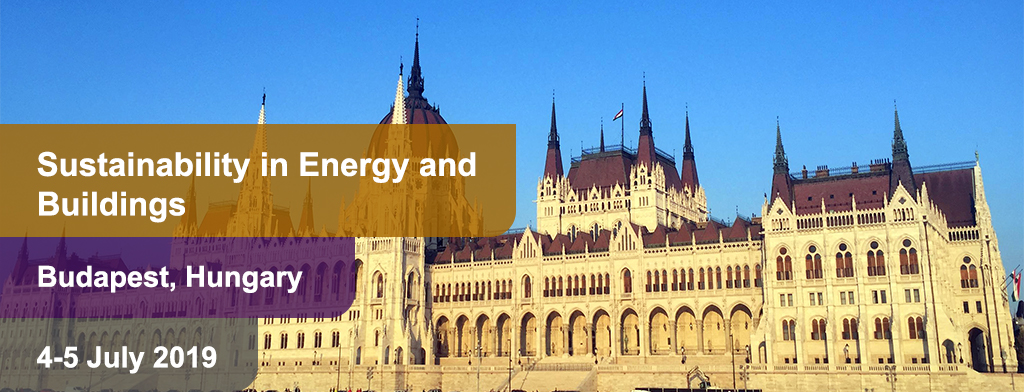Prof Fernanda Rodrigues
University of Aveiro, PortugalClimate Changes Impact on the durability and energy performance of buildings
Professor Fernanda Rodrigues, RISCO, University of Aveiro
Doctor Fabiana Belén Silvero, RISCO, National University of Itapúa
Doctor Pablo Benítez Mongelós, RISCO, National University of Itapúa
Abstract:
Earth has been under climate changes along all the time due to natural processes. However, these changes are also caused and accelerated by anthropogenic activities due to the emission of GHG, among which carbon dioxide is one of the most concerning as presenting an alarming increase in the last decades. Currently, scientific observations clearly denote increases in the global mean temperature of the air and oceans, the widespread melting of snow and ice, and the increase in mean sea level joined by more frequent extreme natural phenomena. Urban areas can be an object of greater global risks due to extreme rainfall, floods, droughts, air pollution, water scarcity or thermal stress. These aspects are and will be intensified for the low-income population, living in poor quality housing and frequently in exposed areas, presenting high vulnerability and low resilience against the consequences of those changes and phenomena. For this reason, one of the first adaptation measures to climate changes, in general, is to reduce the population exposure and vulnerability to the current climate. The impacts produced by recent extreme phenomena of heat waves, floods, droughts, cyclones or forest fires, show the vulnerability of some ecosystems to this climatic variability. Among these impacts, it can be mentioned the damage to structures and infrastructure, alteration of ecosystems, disorganisation in food production and water supply, consequences for mental health and human well-being, among others.
Different researchers depict the impact of climate changes on the built environment according to the geographic location that involves materials and constructive elements degradation in all kind of structures and infrastructures. These researches also analyse, develop and evaluate different adaptation techniques to prepare the built environment to resist the consequences of climate changes that must also involve its influence in the operation and maintenance of the constructions.
Maintenance and repair of existing and new constructions, present the challenge of dealing with the uncertainty of climatic phenomena that in the last century did not require further consideration. In recent years, materials have presented a particular vulnerability to aggressive environments, affecting the service life and the economy of construction projects. To consider Projects maintenance, inspection and sustainable refurbishment dynamically, linked with the expected climate variability are nowadays crucial to guarantee not only the durability but also the comfort and wellbeing of the population.
The research work herein presented will focus on the carbonation-induced corrosion of RC structures of recent buildings and in the energy retrofit of heritage housings in a hot humid climate developing country, considering forecasting scenarios of climate changes.
In the scope of carbonation-induced corrosion of RC structures, several studies shown that structures can be affected by the impact of this phenomenon considering its durability highlighting the reduction of its expected service life caused by an increase in the corrosion rate, associated with the rise in temperature and the atmospheric concentrations of CO2. So, an optimised methodology for the formulation of maintenance strategies of RC structures subjected to the carbonation-induced corrosion, considering the effects of climate change was developed, based on the numerical modelling of carbonation in RC structures to obtain the degradation curves that show the expected carbonation depth for the next 50 years, under different climate scenarios. With this analysis, it was possible to determine the corrosion initiation and corrosion propagation times for the structures considering several configurations of the principal parameters influencing durability: the quality of the concrete and the cover thickness. Preventive maintenance strategies and repair planning are based on dynamic models for decision-making, considering the cost analysis of the maintenance strategy and the capabilities of the inspection and repair techniques ensuring the durability of the structures through the preventive maintenance approach, were developed.
The main results showed that the carbonation-induced corrosion risk of structures can increase in the future due to the climate change effect. Thus, for the worst climate scenario, in the second half of this century is expected an increase of 25% in the maximum carbonation depth regarding a control scenario. Meanwhile, the time to reach the same maximum carbonation depth of the control scenario can be reduced between 7 and 10 years for the best scenario, depending on the quality of the concrete. Furthermore, the maintenance model developed in this research is easily applicable and allows the formulation of long-term strategies that optimise resources at the lowest cost to deal with this degradation mechanism.
In the scope of thermal comfort and energy efficiency of heritage housing, the simulations, taking in consideration the climate changes effects, show the optimum cost-efficiency measures that lead to a higher indoor comfort, lower energy consumption and GEG emissions.
Biography:
Fernanda Rodrigues is a civil engineer, with a PhD in Civil Engineering on the topic of the housing conservation state and anomalies assessment. Is an integrated member of the RISCO - Aveiro Research Centre of RIsks and Sustainability in Construction and assistant professor in the Civil Engineering Department of the University of Aveiro, in Portugal, where she is the director of the Integrated Master in Civil Engineering. She is the lecturer and responsible for the courses in the area of construction management and qualified expert for thermal performance of buildings. She is currently involved in research projects on the high energy efficiency of buildings, LCA of retrofit solutions. She has supervised more than 60 master thesis and 10 (5 concluded and 5 ongoing) doctoral thesis in several fields and performed several technical reports on the construction anomalies, its causes and limitation/elimination measures. She is author and co-author of more than 150 publications in international peer-reviewed journals, national and international conferences. Currently is researching in BIM, in energy retrofit of buildings, buildings condition assessment, durability, maintenance and management of buildings.
Back to Keynote Speakers

